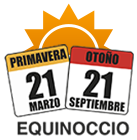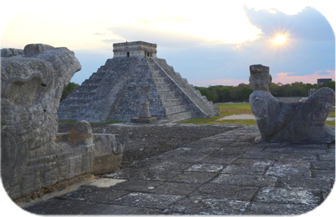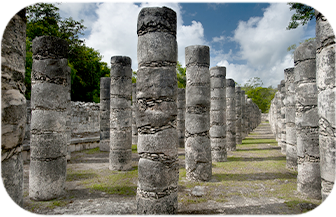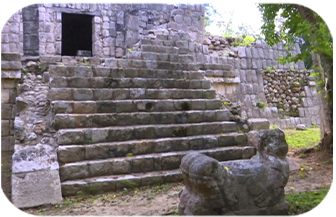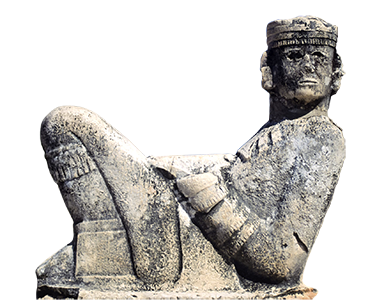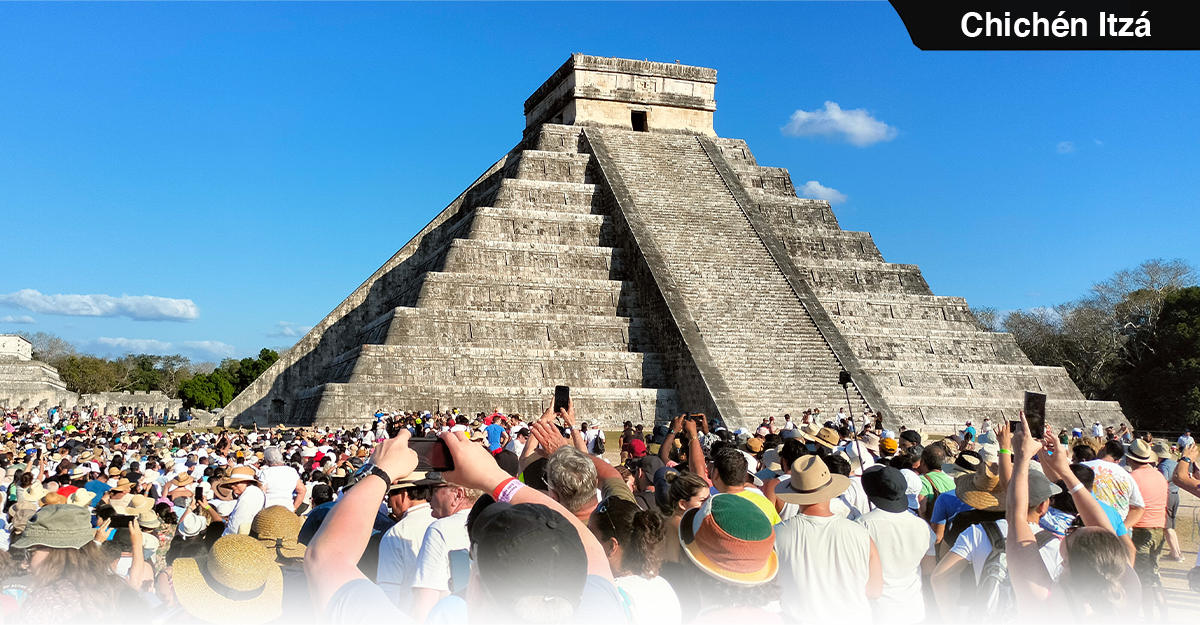
This legendary Mayan city, whose name means; "Mouth of the well of the Itzaes". was declared a World Heritage Site by UNESCO since 1988 and as a Wonder of the Contemporary World since 2007. It stood out as the cultural and political center of the ancient Mayan civilization and was one of the largest settlements in the center-north of the peninsula. from Yucatan. In its heyday, it was the most powerful city in the Yucatan Peninsula.
The Itzáes settled in Chichén Itzá in the 9th century AD. It is believed that they were Putun or Chontal Mayans. Towards the end of the 10th century, the city was invaded by a predominantly warrior tribe: the Toltecs, something that brought with it a new series of cultural elements, especially the representation of the serpent-god Kukulkan. In 1250 AD, it was abandoned for reasons not entirely determined. In Chichén Itzá you will find a series of architectural and natural wonders such as El Castillo, the Great Ball Court, the Temple of the Warriors, the Sacred Cenote, among others.
We invite you to learn more about this marvel in this same space and you will be enchanted!
The Itzáes settled in Chichén Itzá in the 9th century AD. It is believed that they were Putun or Chontal Mayans. Towards the end of the 10th century, the city was invaded by a predominantly warrior tribe: the Toltecs, something that brought with it a new series of cultural elements, especially the representation of the serpent-god Kukulkan. In 1250 AD, it was abandoned for reasons not entirely determined. In Chichén Itzá you will find a series of architectural and natural wonders such as El Castillo, the Great Ball Court, the Temple of the Warriors, the Sacred Cenote, among others.
We invite you to learn more about this marvel in this same space and you will be enchanted!
Structure Groups

Hostel

Location
Location
Municipality of Tinum, Yucatan. Piste Municipal Commissioner.
Hours of services
Monday to Sunday 08:00 hours to 20:00 hours. Last access at 16:00 hours.
Visiting Hours for Archeological Zone
Monday to Sunday 08:00 to 16:00 hours
"Noches de Kukulkán" Videomapping Schedule
Thursday to Sunday, at 19:00 hours.
